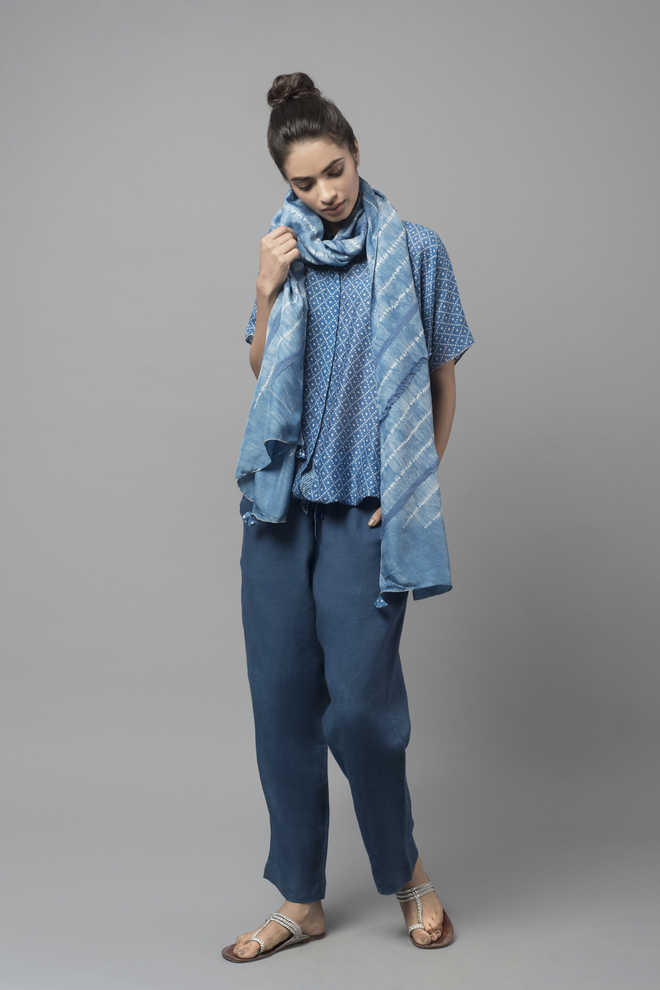
Sharmila Chand
Sustainable fashion has arrived. ‘Eco- friendly’, ‘organic’ or ‘green’ are no more mere hip tags. Fashion houses are actually getting into the serious mode. Mango’s new, organic cotton collection called ‘Mango Committed’ is in stores this season; Zara’s ‘Join Life Collection’ features recycled material ‘Refibra’; H&M’s ‘Conscious Collection’, ‘Reformation’ collections turn around the fashion garments in re-purposed material; Dutch fashion house Viktor & Rolf’s 2017 Spring Collection features deconstructed, damaged vintage outfits transformed into couture gowns. Need we say the concept is on fire?
Designers across the world have jumped on to the bandwagon to introduce more eco-friendly, organic and recycled materials. Remember, the kind of ovation sustainable fashion designer Peggy Sue Deaven-Smiltnieks got for her Collection at Toronto Women’s Fashion Week this year? It brought down the house with her farm-to-high fashion designs.
Closer home, designers are addressing the issue and bringing about a more socially responsible ethos within the industry.
For designer Payal Khandwala, “buy less, but buy better” is the key to sustainable fashion. “In my opinion, the planet doesn’t need any more clothes. Neither do you nor do I.”
But fashion changes fast. How do we do without new clothes… Payal sees the answer in timeless styles. “If we all made clothes that could focus on timeless style, perhaps we can shift the focus from fast fashion to slow fashion.” She insists on designing clothes that are season-less. “They are meant to be worn for years. So, we make them slowly and with care. They are designed as separates so that you can wear them in multiple ways. They have their own language and come without the baggage of trends, so you don’t feel compelled to buy something new every few weeks. We don’t churn out multiple collections every year because it is considered a product that is meant to be cherished, not to be cast away after wearing once. We grow slowly and organically and don’t employ people or looms because brocade is in trend or handwoven textiles are fashionable.” Businesswise, Payal ensures responsible sourcing of yarn and dyeing facilities at her weaving clusters in Varanasi, West Bengal and Bhagalpur.
Among the high-end designers, promoting sustainable fashion is Anita Dongre with her brand named Grassroot. For her, sustainable fashion means conducting the business of fashion the way it was always meant to be — looking towards the future, practicing and building processes that are sustainable, respectful of the people involved and environmentally conscious. “Grassroot is the embodiment of my core passion—to design clothes that hold a purpose. Every piece in this collection celebrates the crafts of India in contemporary wear. It also provides artisans a sustainable means of income in their villages, thus driving economy back through textile crafts.”
With her, the idea was to give back to industries that have been behind-the-scenes of mainstream fashion. “It keeps the focus on reviving and empowering indigenous weavers and craftsmen by giving them employment for the production of modern-day garments,” says Dongre.
Simple and easy to wear is the mantra for Anita Lal from Good Earth. For the brand, luxury is about “surrounding oneself with beautifully designed, artisanal products that sustain traditions, livelihood and the planet.” Its Sustain apparel range was launched 10 years ago. “At the time, it was our conscious decision to bring khadi and handlooms into the mainstream of luxury clothing by making well-finished and easy-to-wear silhouettes.”
Also toeing the sustainable line is designer Shweta Sharma through her label Ombré Lane. For her, it is important that what is sustainable is also stylish. “We cater to the clothing needs of the modern working women. We also believe in creating a direct impact in the lives of our fellow women with the help of our customers, and in creating pieces with long-lasting quality and durability over fast fashion.”
Well, going sustainable is cool. Let no rules guide you. Do it your way. A tee that could last 10 years versus a couple months is the choice for you to make, for, in the end, it is for a better earth. And that could be your bit for the cause.
Source:-tribuneindia.
